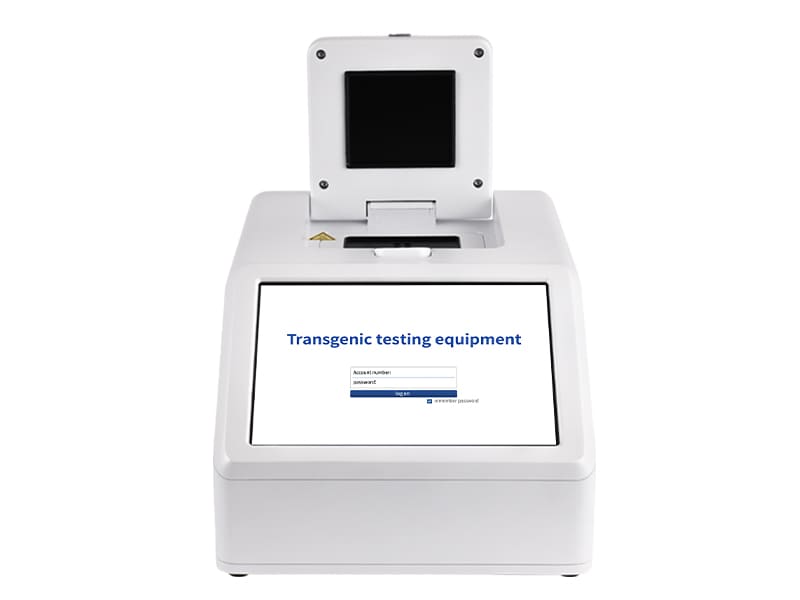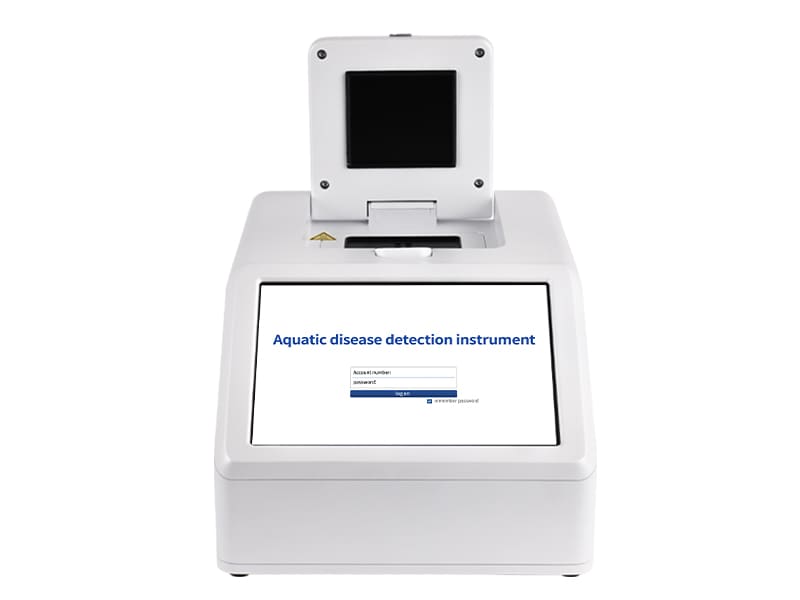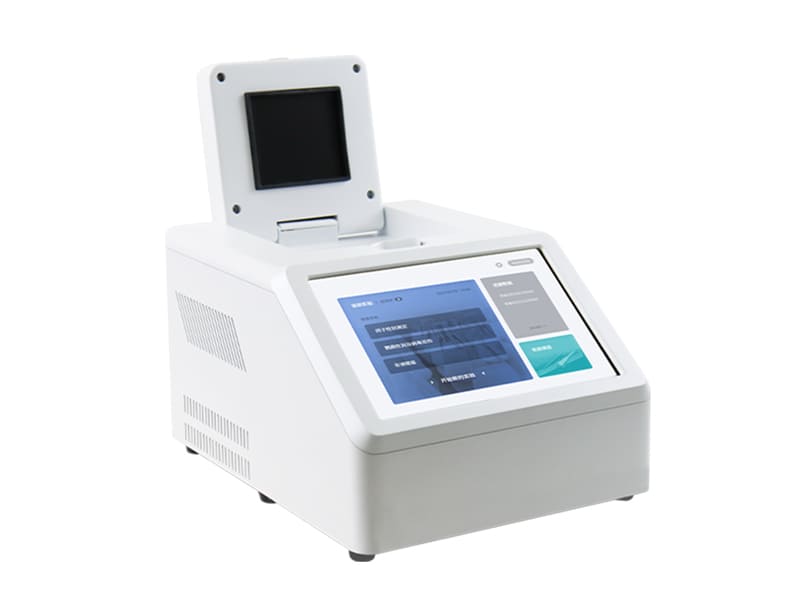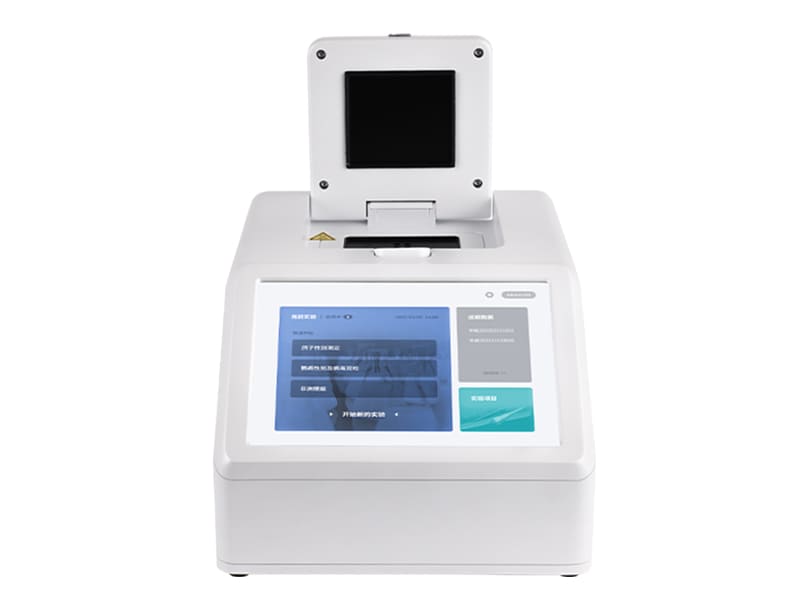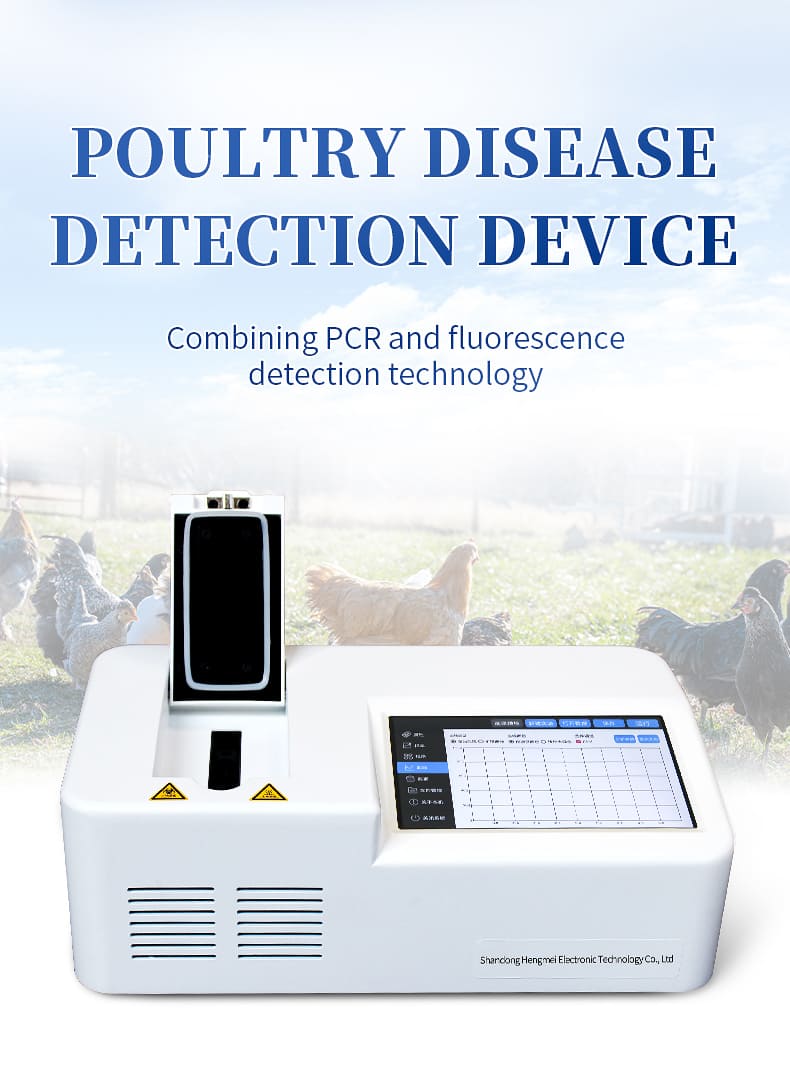
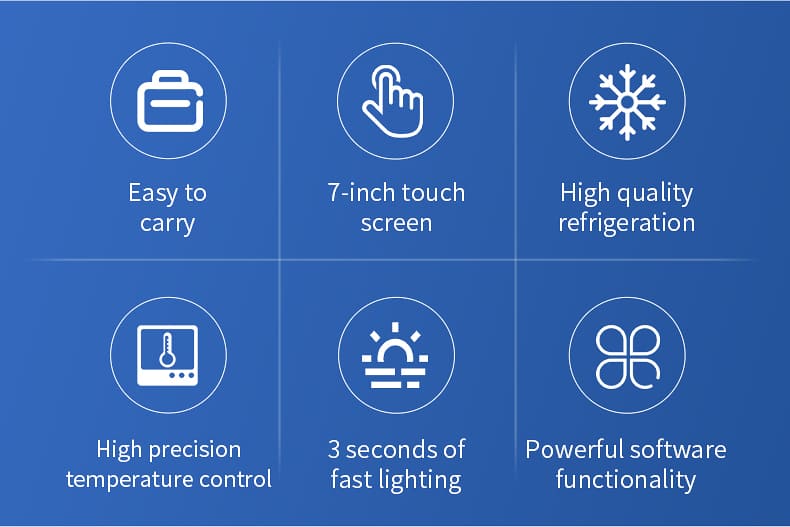
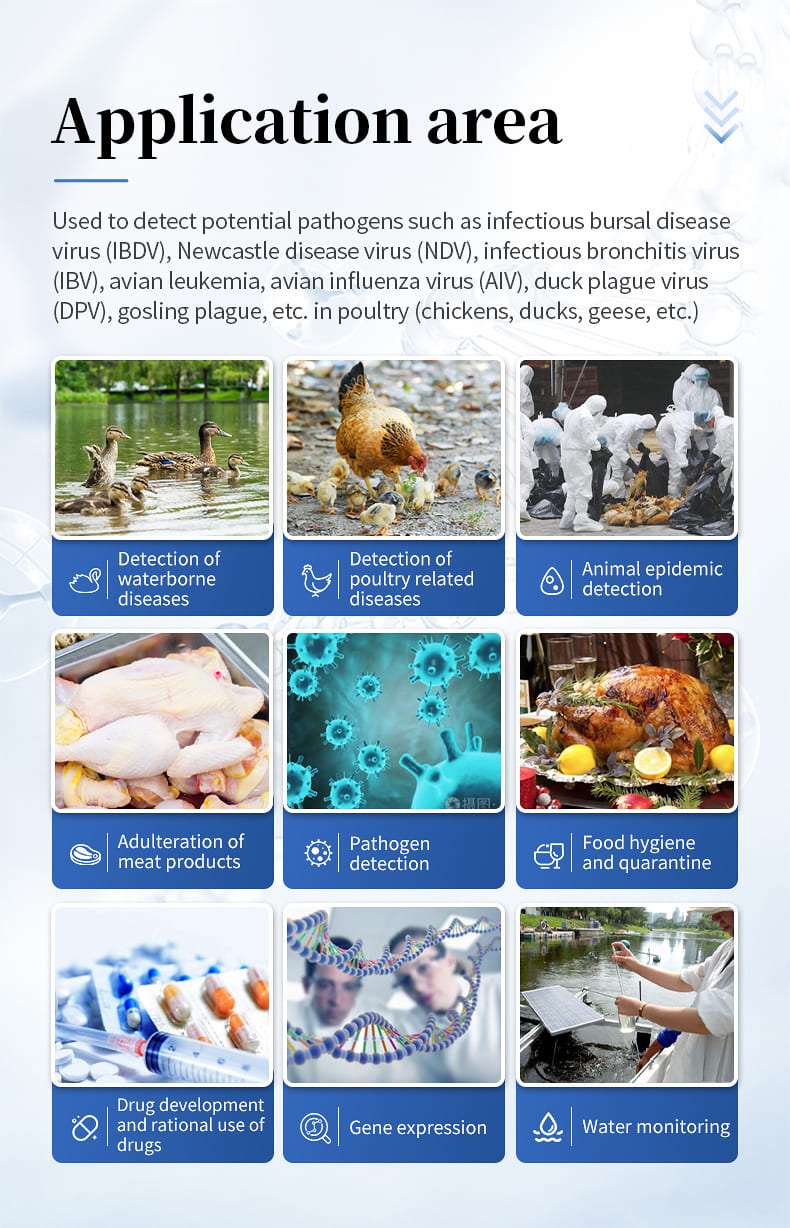
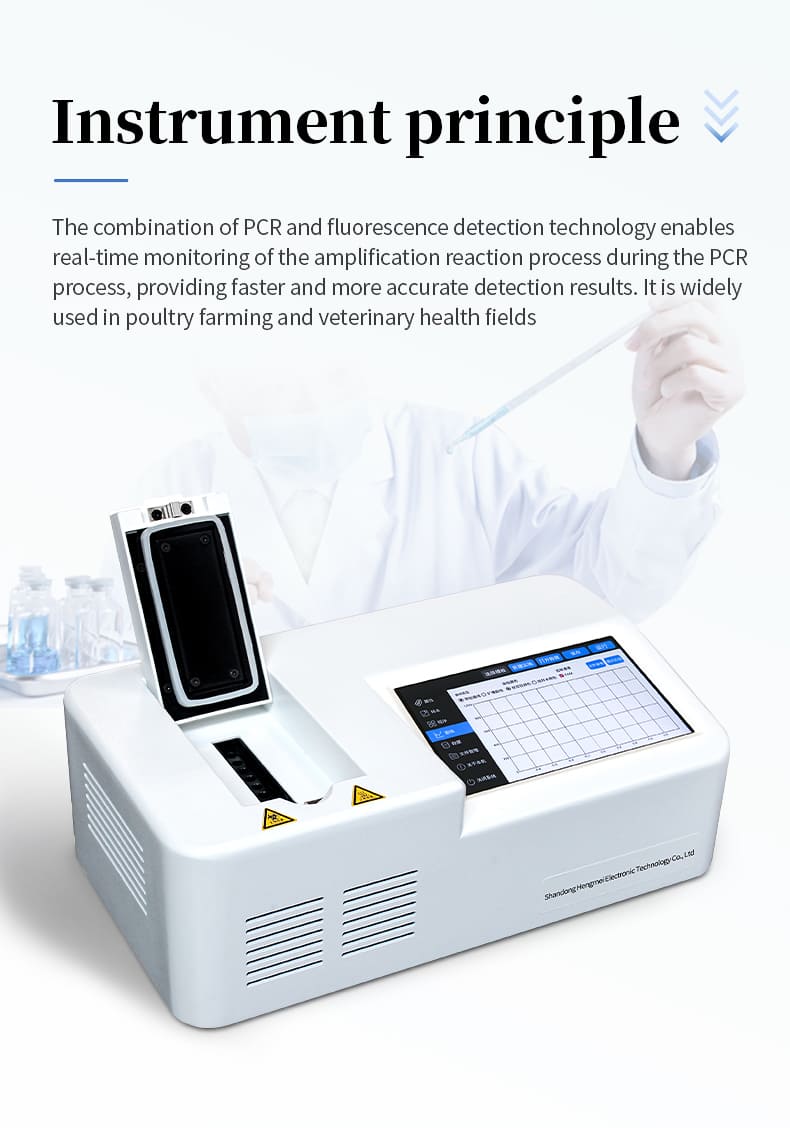
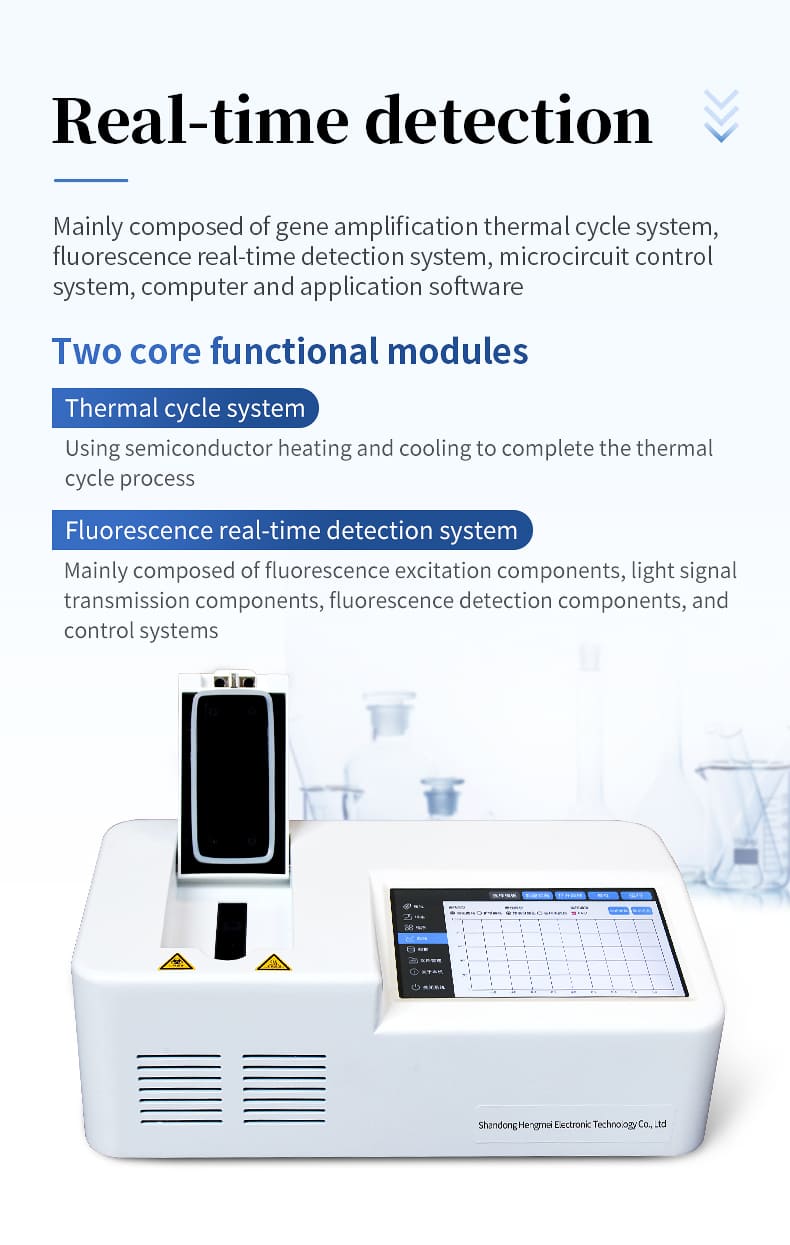
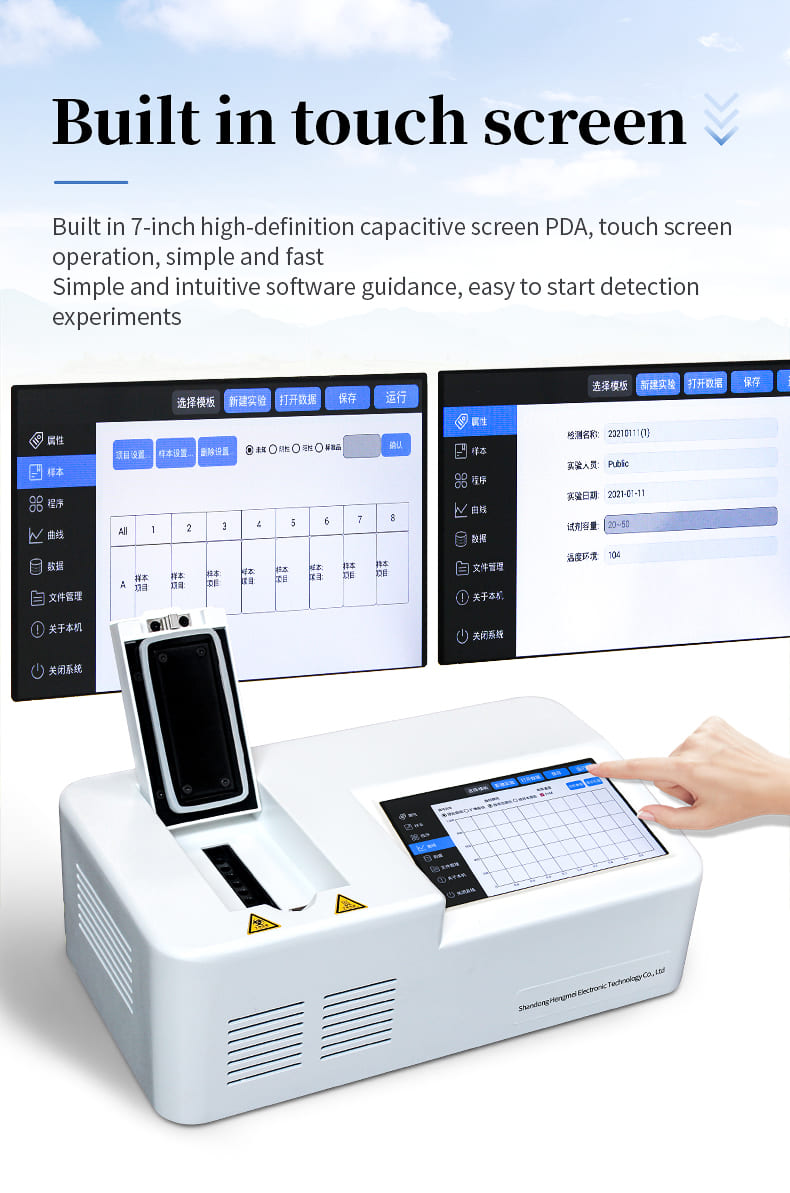
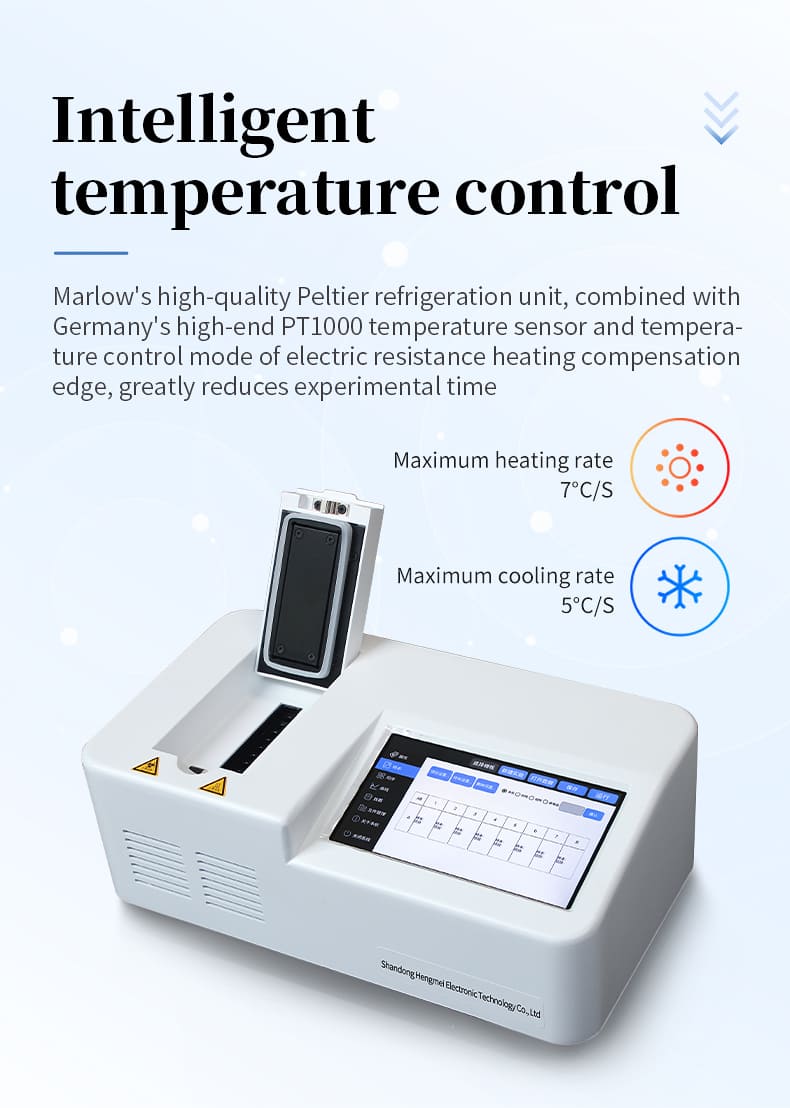
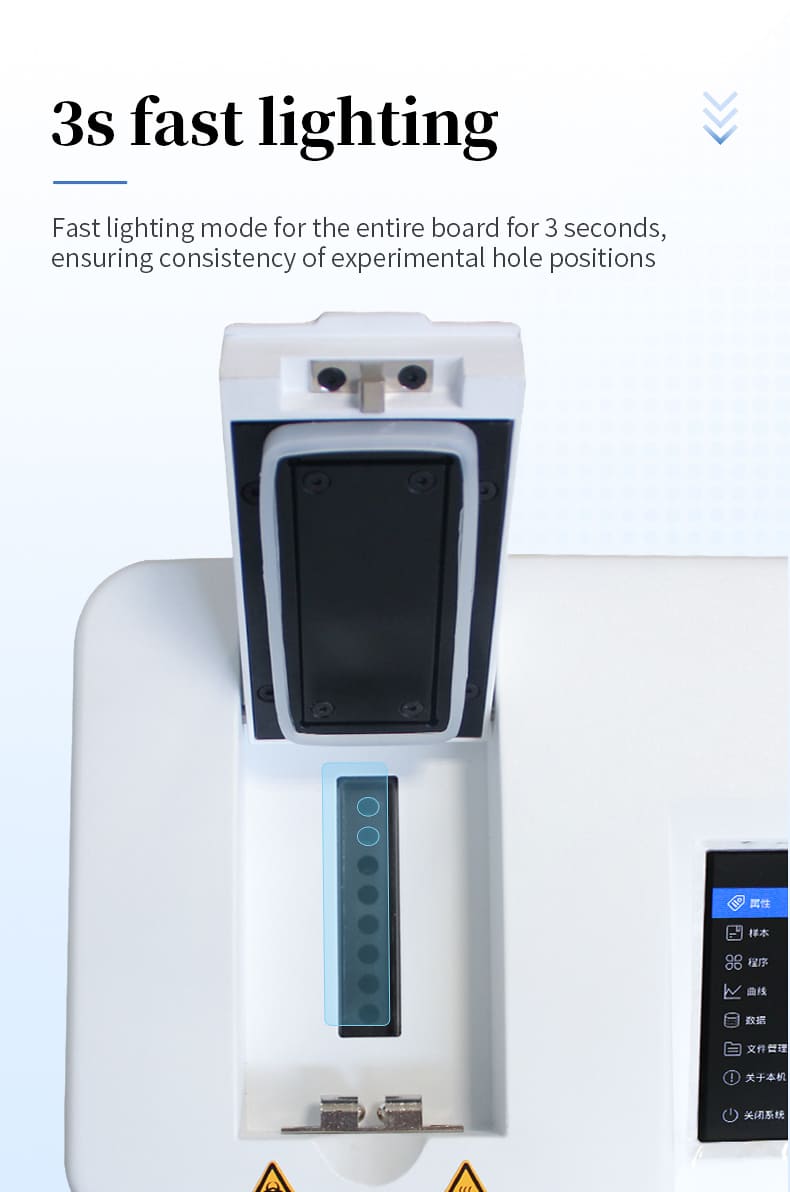
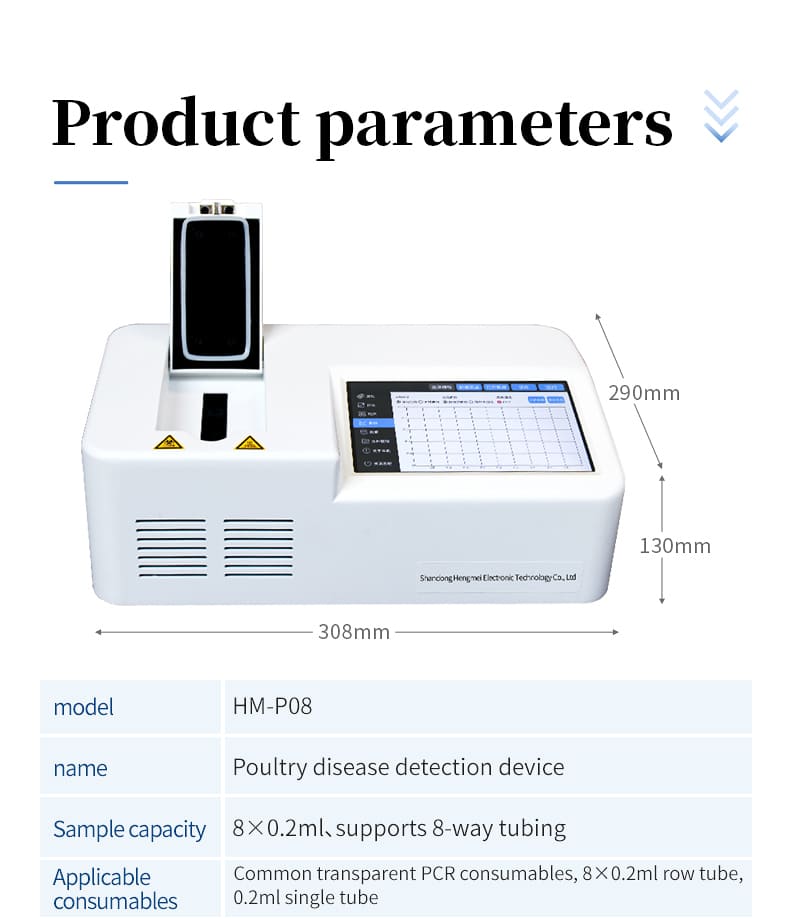
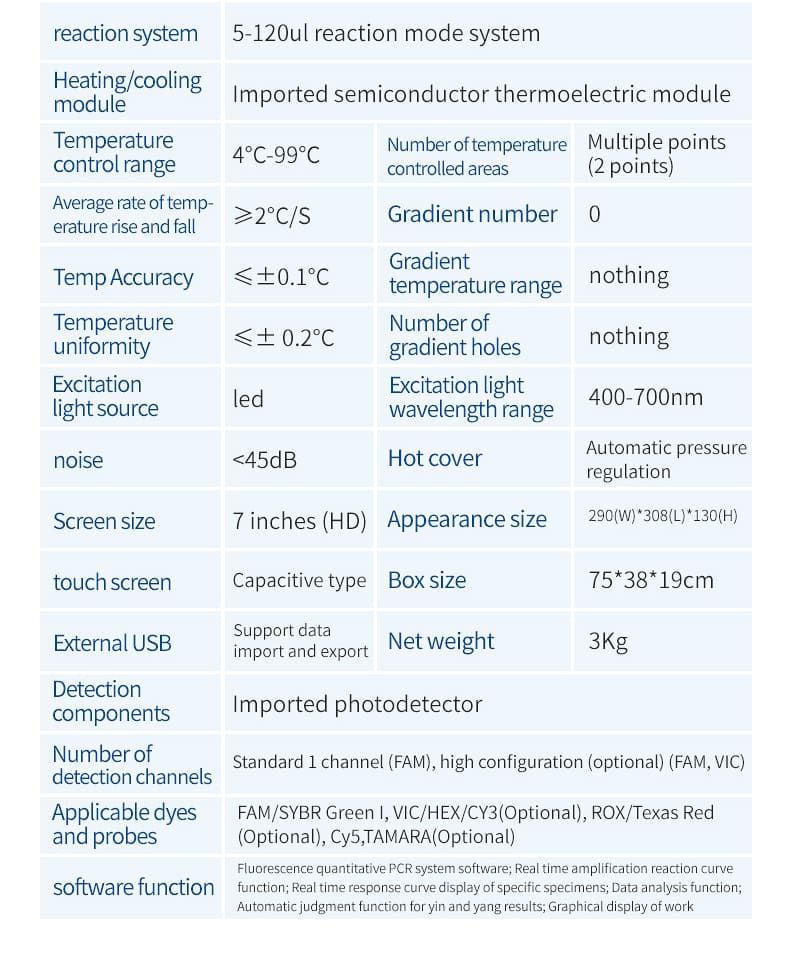
Product Introduction
The avian disease detector is a device used to detect potential pathogens such as infectious bursal disease virus (IBDV), Newcastle disease virus (NDV), infectious bronchitis virus (IBV), avian leukemia, avian influenza virus (AIV), duck plague virus (DPV), and gosling plague in poultry (chickens, ducks, geese, etc.). These detection instruments are mainly used to monitor the health status of poultry, and to detect and control the spread of poultry diseases early.
Real time fluorescence PCR detection combines PCR and fluorescence detection technology. The fluorescence PCR detector can monitor the process of amplification reaction in real time during the PCR process, providing faster and more accurate detection results. It is widely used in poultry farming and veterinary health fields.
Basic Principles
The principle of HM-P08 real-time fluorescence quantitative PCR instrument: Polymerase chain reaction (PCR) is a molecular biology technology used to amplify specific DNA fragments. It can be seen as a special DNA amplification in vitro, consisting of several steps such as high-temperature denaturation, low-temperature annealing, and appropriate temperature extension to form a temperature cycle, allowing the target gene to be rapidly amplified. It has strong specificity, high sensitivity, simple operation, and time-saving characteristics, and is a major innovation in gene amplification technology. PCR technology can specifically amplify extremely small amounts of target DNA by millions of times, greatly improving the analysis and detection capabilities of DNA molecules.
Real time fluorescence quantitative PCR technology is a method that adds corresponding fluorescent dyes or fluorescent labeled probes on the basis of conventional PCR. During the PCR reaction process, the entire PCR process is detected in real time through changes in fluorescence signals. The total amount of products after each polymerase chain reaction (PCR) cycle is monitored using fluorescent chemicals, and specific DNA sequences in the test sample are quantitatively analyzed using internal or external reference methods.
Basic structure
The real-time fluorescence quantitative PCR system is an instrument for real-time detection of reactions, mainly composed of gene amplification thermal cycle system, fluorescence real-time detection system, microcircuit control system, computer and application software. Two core functional modules are the thermal cycling system and the fluorescence real-time detection system. The working principle of the gene amplification thermal cycle system is basically the same as that of traditional gene amplification instruments, using semiconductor heating and cooling to complete the thermal cycle process. The fluorescence detection system mainly consists of fluorescence excitation components, light signal transmission components, fluorescence detection components, and control systems.
Characteristic
1. Small size, light weight, and easy to carry. Easily meet the needs of outdoor experiments.
2. Built in 7-inch high-definition capacitive screen PDA, touch screen operation, simple and fast.
3. Marlow high-quality Peltier refrigeration sheets, combined with the German high-end PT1000 temperature sensor and the temperature control mode of the electric resistance heating compensation edge, have a large heating rate of 7 ℃ and a large cooling rate of 5 ℃, greatly reducing the experimental time.
4. Fast lighting mode for the entire board for 3 seconds to ensure consistency in the hole positions of the experimental results.
5. Simple and intuitive software guidance makes it easy to start detection experiments.
Application area
Detection of waterborne diseases
Detection of poultry diseases
Animal epidemic detection
Pathogen detection
Meat product adulteration
Food hygiene and quarantine
Reasonable drug use and drug development
Gene expression
Water monitoring
Technical parameter
Sample capacity: 8x0.2ml, supports 8-way tubing
Applicable consumables: Common transparent PCR consumables, 8x0.2ml tube, 0.2ml single tube
Reaction system: 5-120ul reaction mode system
Heating/cooling module: imported semiconductor thermoelectric module
Temperature control range: 4 ° C-99 ℃
Average temperature rise and fall rate ≥ 2 ° C/second
Temperature control accuracy: ≤ ± 0.1 ° C
Temperature uniformity: ≤ ± 0.2 ° C
Number of temperature control areas: multiple points (2 points)
Gradient number: 0
Gradient temperature range: None
Gradient hole count: None
Excitation light source: maintenance free LED
Excitation wavelength range: 400-700nm
Detection component: imported photodetector
Number of detection channels: Standard 1 channel (FAM), High configuration (optional) (FAM, VIC)
Applicable dyes and probes: FAM/SYBR Green I, VIC/HEX/CY3 (optional), ROX/Texas Red (optional), Cy5, TAMARA (optional)
Software function: Fluorescence quantitative PCR system software; Real time amplification reaction curve function; Display of real-time response curves for specific specimens; Data analysis function; Automatic judgment function for yin and yang results; Graphical display function.
Noise:<45 dB
Screen size: 7 inches (HD)
Touch screen: capacitive
External USB: supports data import and export
Hot cover: automatic pressure regulation
Appearance dimensions: 290 (W) * 308 (L) * 130 (H)
Box size: 75 L * 38 W * 19 H cm
Net weight: approximately 3Kg
- Previous: no more
- Next: Agricultural product genetically modified testing instrument



 Current
Location:
Current
Location: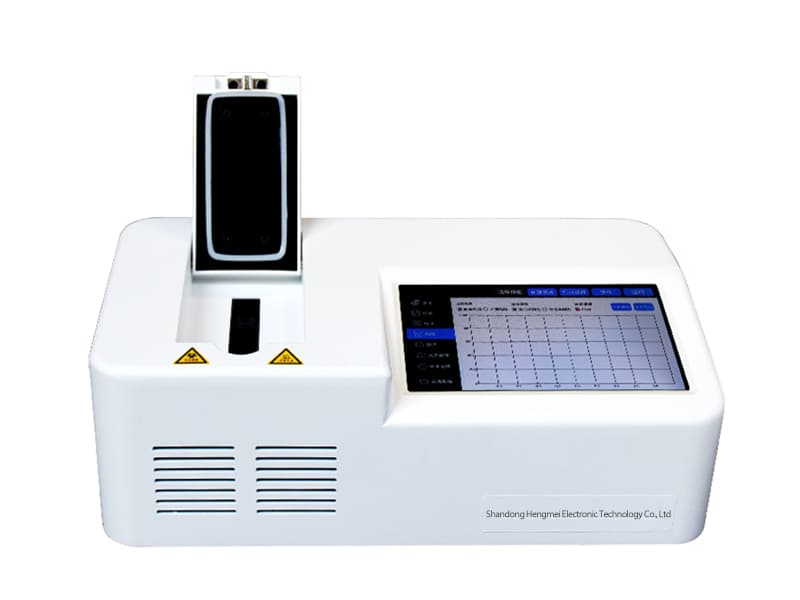
 +86 17853698681
+86 17853698681 WhatsApp
WhatsApp Product Details
Product Details Related Products
Related Products